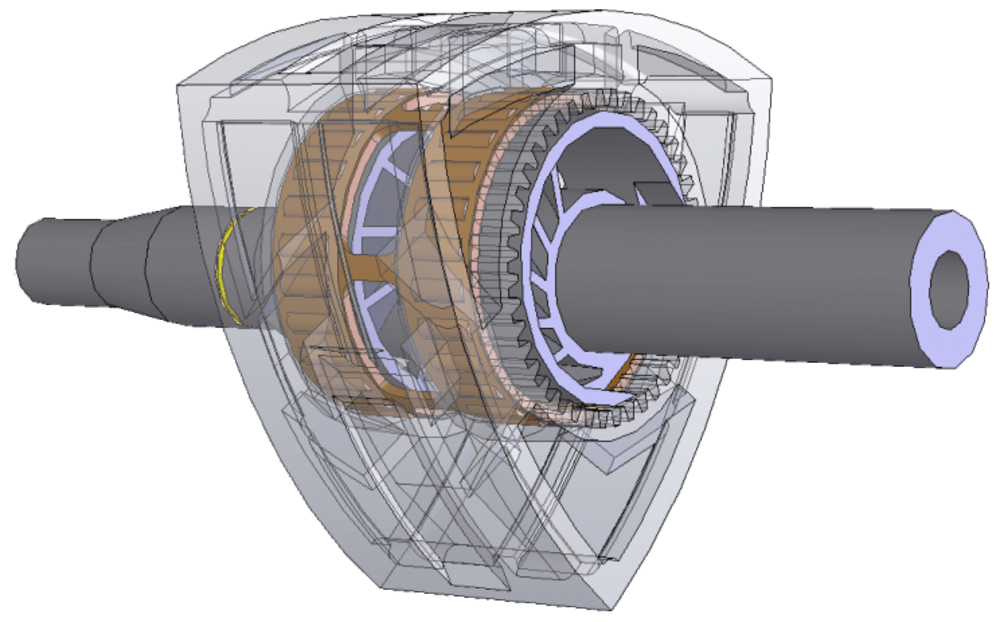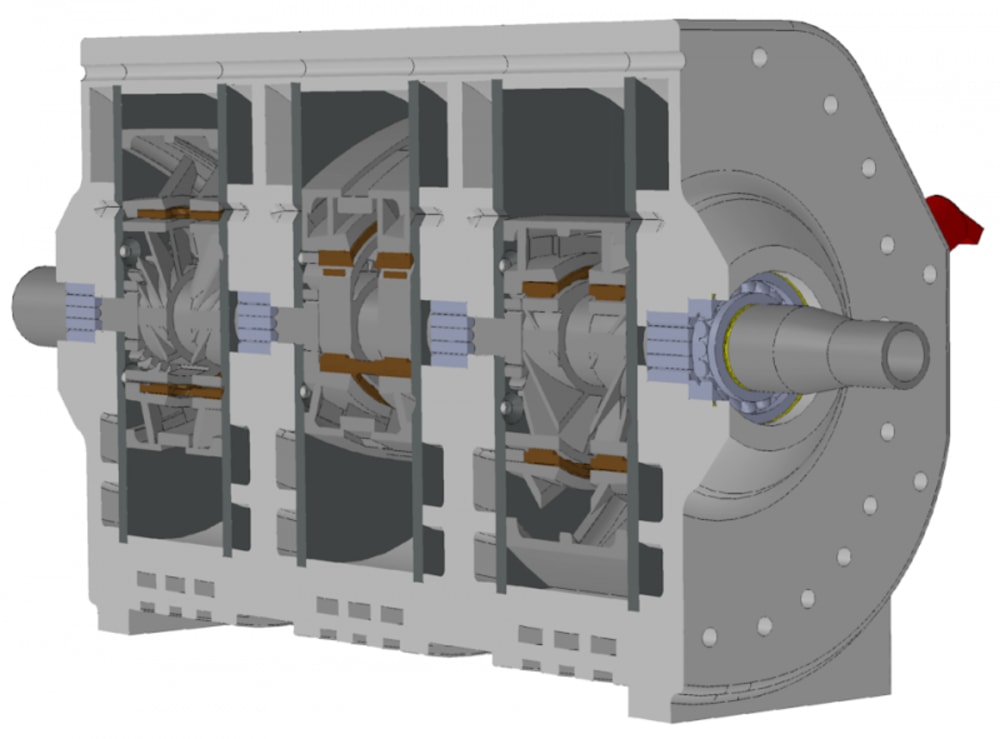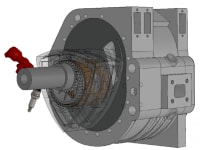Freedom Motors NL has designed an extremely efficient 1,2 and 3-rotor industrial multifuel rotary engine concept. Displacement is 533 cc per rotor, the working rpm range is between 3000 and 4500 rpm, dependable of type and application. The engine/rpm is electronically controlled without throttle, using a (direct) multifuel injection system.
Main goal of the concept is a extremely compact, light, clean and efficient engine ready for the 21st Century, usable for a wide range of applications;
• Range extender with a power range of 20 – 120 kW (1-3 rotors 4500rpm), dependable on the model, for use in cars, busses and light commercial vehicles.
• Mini-cogeneration-CHP (WKK) with a power range of 20 – 60 kW (1-3 rotors 3000rpm), running on natural gas, biogas or hydrogen, generating power at an efficiency 150% higher compared to natural gas power stations. Dimensions and weight of a 60kW unit is comparable to a 20kW conventional Mini-cogeneration-CHP unit.
• Emergency generators
• Waterpumps
• Refrigerated Transportation
• Aviation
• Maritime applications
• HVAC systems for large electric vehicles like busses
• Other industrial applications
Due to the modular characteristics of the rotary engine a wide range of available power levels will be available.
The concept, the WRE (World Rotary Engine) has a number of unique properties, developed by Freedom Motors NL:
Symetrically centered chargecooling of the rotating parts (rotor/crankshaft) (patented), this system provides optimal cooling for critical parts of the engine using a minimum of components. Like a Diesel engine the aspirated air is not restricted by a throttle in order to enable optimal cooling and efficiency.
External lean-burn combustion chamber (patent pending) combined with ID-EGR channel (internal pressure-boosting EGR channel). The combustion chamber geometrics of the traditional rotary engine were a disadvantage to optimize fuel consumption and emissions. This External lean-burn combustion chamber design eliminates this problem and allows for extremely low fuel consumption and emissions (zero CO2 emissions on hydrogen).
These innovations, combined with the existing properties of the rotary engine allows a 3-rotor 1599 cc engine (comparable with a 9-cilinder 4-stroke engine) shortblock to consist of only 15 indiviual parts (incl. bearings, excl seals, nuts and bolts) and to be of extremely low weight.
The modular concept of the engine makes that the same basic parts of a 3-rotor engine can be used for building a 4, 5 or 6-rotor engine, power outputs expand linear with adding the rotor.
Application of these technologies to the rotary engine compensates the historical limitations of the rotary engine while the existing advantages are kept or enhanced, like;
• Extremely low weight
• Extremely small dimensions (allows for good sound insulation)
• No vibration (no reciprocating parts)
• Only two moving parts (in a 1-rotor engine, for every added rotor, only one moving part is added)
• Extremely high efficiency
• Low emissions
• Few recourses (raw materials) needed for production
Like this entry?
-
About the Entrant
- Name:Anton Ovemars
- Type of entry:individual
- Software used for this entry:autocad
- Patent status:patented








